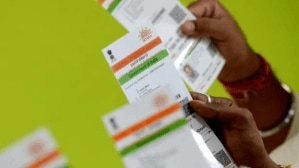India created history with the launch of Chandraayan 3. It is expected to touch down on the surface of the Moon at 6.04 pm on August 23, as per the officials. The man spearheading ISRO, S. Somnath has played a significant role in a number of missions conducted by ISRO. He currently serves as the Chairman of ISRO and heads important missions as part of the organisation. Here’s more about the leading man in science in the country.
S.Somanath’s early Life and Education
Sreedhara Panicker Somanath, is an Indian aerospace engineer who was born in July 1963 to a Malayali family in Kerala. Somanath completed gis schooling from St. Augustine’s High School in Aroor and graduated from Maharaja’s College in Ernakulam with a pre-university degree. He pursued his Bachelor’s degree in mechanical engineering from Thangal Kunju Musaliar College of Engineering, Kollam, Kerala University followed by his master’s degree in aeronautical engineering from the Indian Institute of Science, Bangalore, with a focus on dynamics and control.
S.Somanath’s career
Somanath began working at the Vikram Sarabhai Space Centre in 1985, following graduation. During the earlier stages of the Polar Satellite Launch Vehicle project, he was involved. He became associate director of the Vikram Sarabhai Space Centre and the project director of Geosynchronous Satellite Launch Vehicle Mark III launch vehicle in 2010. Up until November 2014, he served as the Propulsion and Space Ordinance Entity’s deputy director.
Somanath held the positions of director of the Liquid Propulsion Systems Centre (LPSC) and the Vikram Sarabhai Space Centre in Thiruvananthapuram. Somanath is respected for his contributions to the design of launch vehicles, especially in the fields of structural design, structural dynamics, and pyrotechnics.
In his capacity as Director of LPSC, he oversaw the team that developed and qualified the CE20 cryogenic engine and the C25 stage, both of which were successfully flown during the GSLV Mk-III D1 flight. Another significant technological work was the creation of throttleable engines for the Chanradrayaan-2 lander ship. Under his direction, the 18mN thrust electric propulsion system for GSAT-9 made its first successful flight, and 75mN and 300mN thrust stationary plasma thrusters were developed.
In January 2018, he was appointed Director, VSSC. Significant accomplishments have been made by VSSC under his direction, including the demonstration of the Crew Escape System through the Pad Abort Test (PAT), the launch of the 50th PSLV and the GSLV Mk-III M1/Chandrayaan 2 spacecraft. For the impending Gaganyaan mission, he recently led the development of crucial systems such as crew module systems, human rating of GSLV Mk-III, integrated vehicle health monitoring system, etc. He guides the creation of the Small Satellite Launch Vehicle (SSLV) with a variety of cutting-edge technologies and production techniques for the reduction of costs and the acceleration of production.
In the fields of structural dynamics and control, dynamic analysis of separation mechanisms, vibration & acoustic testing, launch vehicle design, and launch services management, he has published a number of papers in journals and seminars.
As a delegate and representative of India at the UN-COPOUS in Vienna, the International Programme Committees of the International Astronautical Federation (IAF), and the International Astronautical Congress (IAC) conducted in several nations, Shri Somanath has travelled extensively. He is a member of the International Project/Program Management Committee, the Technical Committee for Space Transportation, and the Vice President of the IAF in charge of the Technical Activities.








